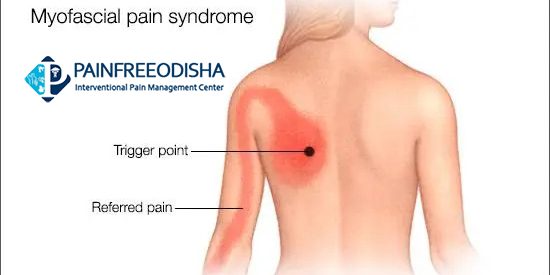Myofascial pain syndrome is a common condition that affects many people, causing pain and discomfort in various parts of the body. It occurs when trigger points or muscle knots develop in the muscles and fascia, causing local pain, and even referred pain in other parts of the body. In this blog post, we will explore the causes, symptoms, and treatment options for myofascial pain syndrome.
Causes of Myofascial Pain Syndrome
Myofascial pain syndrome can occur due to various reasons. One of the most common causes is muscle overuse, leading to the formation of trigger points or muscle knots. Other causes include muscle trauma, injury, poor posture, and stress.
Symptoms of Myofascial Pain Syndrome
The symptoms of myofascial pain syndrome can vary depending on the location and severity of the condition. Common symptoms include:
- Localized pain or tenderness in the muscles and surrounding areas.
- Aching or burning pain that can be felt in other parts of the body.
- Limited range of motion and stiffness.
- Muscle weakness and fatigue.
- Difficulty sleeping due to pain and discomfort.
- Treatment for Myofascial Pain Syndrome
The treatment for myofascial pain syndrome typically involves a combination of therapies, including:
- Physical Therapy: Physical therapy is an effective treatment for myofascial pain syndrome. A physical therapist will use techniques such as massage, stretching, and strengthening exercises to alleviate muscle tension and improve range of motion.
- Medications: Medications such as nonsteroidal anti-inflammatory drugs (NSAIDs) and muscle relaxants may be prescribed to help alleviate pain and reduce muscle tension.
- Trigger Point Injections: Trigger point injections are another treatment option for myofascial pain syndrome. During this procedure, a needle is inserted into the trigger point, and a local anesthetic or steroid is injected to reduce pain and inflammation.
- Alternative Therapies: Alternative therapies such as acupuncture, chiropractic care, and yoga may also be beneficial in relieving myofascial pain syndrome symptoms.
Preventing Myofascial Pain Syndrome
To prevent myofascial pain syndrome, it is essential to maintain good posture, exercise regularly, and avoid repetitive movements that can lead to muscle overuse and strain. It is also important to manage stress effectively, as stress can contribute to the development of trigger points and muscle knots.
In conclusion, myofascial pain syndrome is a common condition that can cause significant pain and discomfort. However, with proper diagnosis and treatment, it is possible to manage the symptoms effectively and prevent the condition from recurring. If you are experiencing muscle pain and discomfort, speak to pain management specialist near you to determine if you have myofascial pain syndrome and discuss the best treatment options for you.








